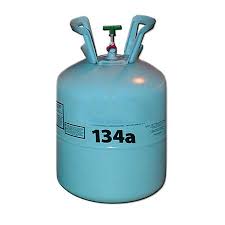Introduction
R134a, or 1,1,1,2-tetrafluoroethane, is a synthetic refrigerant that has played a significant role in modern refrigeration and air conditioning systems. It gained popularity as a replacement for older, ozone-depleting refrigerants, particularly CFC-12 (dichlorodifluoromethane), after the Montreal Protocol of 1987, which aimed to protect the ozone layer. R134a is favored for its excellent thermodynamic properties, non-flammability, and low toxicity. However, as environmental concerns evolve, particularly with regard to global warming, alternatives to R134a are also under consideration. This article delves into the properties, uses, environmental implications, and future of R134a.
Properties of R134a
R134a belongs to the hydrofluorocarbon (HFC) family, which makes it an effective refrigerant. Key properties that contribute to its widespread use include:
Low Ozone Depletion Potential (ODP): Unlike chlorofluorocarbons (CFCs) and hydrochlorofluorocarbons (HCFCs), R134a has an ODP of zero. This means that it does not contribute to the depletion of the ozone layer, which was a major concern with older refrigerants.
Moderate Global Warming Potential (GWP): While R134a is ozone-friendly, it still has a GWP of around 1,430, which is significantly lower than some of its predecessors but still contributes to global warming. This is one of the primary concerns leading to research into alternative refrigerants.
Non-flammability: R134a is considered non-flammable under normal conditions, making it safer to use in various applications, including automotive air conditioning systems and domestic refrigerators.
Applications of R134a
R134a is widely used across numerous industries and systems due to its favorable properties:
Automotive Air Conditioning: One of the most common uses of R134a is in automotive air conditioning systems. It replaced CFC-12 in vehicle air conditioners worldwide, especially after the 1990s when regulations were tightened to phase out ozone-depleting substances. R134a’s efficiency and relatively lower environmental impact made it a suitable alternative.
Domestic and Commercial Refrigeration: R134a is used in household refrigerators, freezers, and air conditioners. It is also found in refrigeration systems used in commercial applications such as food storage, supermarket cooling units, and ice machines.
Industrial Cooling: Industries that require large-scale cooling, such as pharmaceutical manufacturing, chemical processing, and food processing, also utilize R134a for its high efficiency and stable performance over a range of temperatures.
Heat Pumps and Climate Control Systems: R134a is employed in heat pumps and other systems designed for both heating and cooling, owing to its versatile properties.
Environmental Impact of R134a
While R134a has a much lower impact on the ozone layer compared to CFCs and HCFCs, its environmental footprint remains a concern due to its Global Warming Potential (GWP). The refrigerant is a potent greenhouse gas, and its continued use contributes to climate change. The significant GWP of R134a has led to the search for more environmentally friendly alternatives, especially in light of international environmental agreements such as the Kigali Amendment to the Montreal Protocol, which calls for the phasedown of HFCs, including R134a.
Alternatives to R134a
The drive for environmentally friendly refrigerants has led to the development of several alternatives to R134a. Some of the most notable options include:
Hydrofluorine (HFOs): Refrigerants like HFO-1234yf are gaining popularity due to their extremely low GWP and zero ozone depletion potential. HFOs are seen as one of the leading replacements for R134a in automotive air conditioning systems and other applications.
Natural Refrigerants: Gases such as carbon dioxide (CO2), ammonia (NH3), and hydrocarbons (e.g., propane and isobutane) are increasingly being explored due to their minimal environmental impact. These refrigerants have very low GWP values but come with challenges related to flammability or system compatibility.
Blends: Some refrigerant manufacturers have developed blends that combine R134a with other refrigerants to achieve lower GWP. These blends offer a compromise between performance and environmental impact.
Future of R134a
The future of R134a is increasingly uncertain as environmental regulations continue to tighten. While R134a will likely remain in use for the next several years, its long-term viability is under scrutiny. The automotive industry, in particular, is rapidly transitioning to low-GWP alternatives, with HFO-1234yf already replacing R134a in many new vehicles. Similarly, the refrigeration sector is exploring more sustainable options as the industry embraces global efforts to reduce carbon emissions.
Conclusion
R134a has been an essential refrigerant in modern air conditioning and refrigeration systems, offering a balanced combination of efficiency and environmental safety compared to its predecessors. However, its relatively high GWP has made it a target for phase-out in favor of greener alternatives. As industries continue to innovate, the evolution of refrigerants will play a crucial role in mitigating climate change and promoting sustainability in cooling technologies. To Know about more r134a refrigerant visit out news channel newsit. The search for more environmentally friendly alternatives to R134a is expected to accelerate in the coming years, leading to more efficient and eco-conscious refrigeration solutions worldwide.




